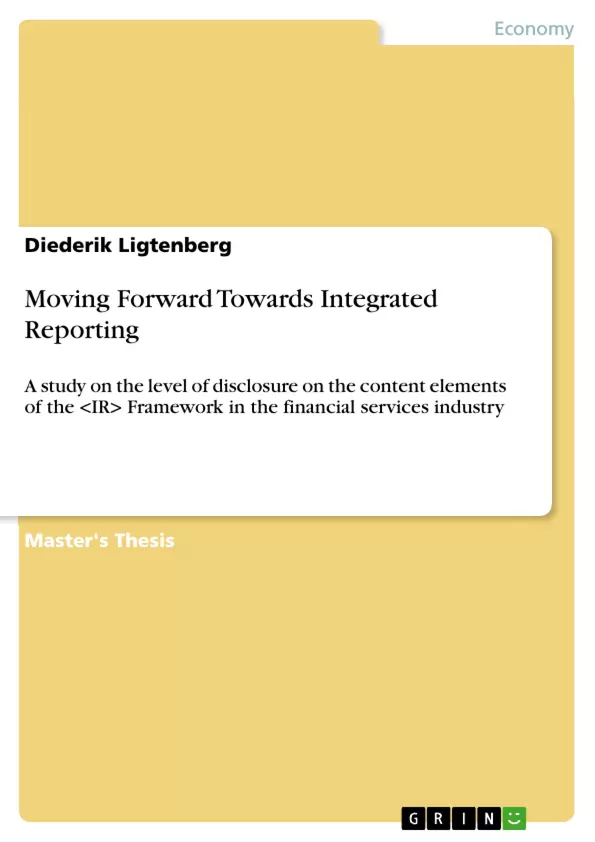This study examines the effect of Integrated Reporting (<IR>) on corporate disclosures in the financial services industry. In particular, this study shows that <IR> leads to a higher level of disclosure of non-financial information, measured by a set of criteria based on the content elements of the Consultation Draft of the <IR> Framework (presented 16.04.2013). In addition, this thesis provides a structured approach and a starting point for the <IR> implementation trajectory. This performance management approach, built on the concept of the Value Driver Tree, interlinks content elements and their interdependencies, with corporate strategy as a starting point for <IR>.
Inhaltsverzeichnis (Table of Contents)
- Organizational Overview and Context
- Governance
- Opportunities and Risks
- Strategy and Resource Allocation
- Business Model
- Performance
- Future Outlook
Zielsetzung und Themenschwerpunkte (Objectives and Key Themes)
This study aims to investigate the level of disclosure on the content elements of the Integrated Reporting (- The
Framework and its content elements - The importance of integrated reporting for financial services companies
- The current level of
disclosure in the financial services industry - Challenges and opportunities associated with
implementation - Potential future directions for
in the financial services industry
Zusammenfassung der Kapitel (Chapter Summaries)
- Organizational Overview and Context: This chapter provides an overview of the financial services industry and the context surrounding
implementation. It discusses the importance of transparency and accountability in the industry and the role of integrated reporting in achieving these goals. - Governance: This chapter explores the governance structures and practices of financial services companies and their relationship to integrated reporting. It examines how governance mechanisms can support the development and implementation of
strategies. - Opportunities and Risks: This chapter analyzes the opportunities and risks associated with implementing
in the financial services industry. It discusses the potential benefits of in terms of enhanced investor understanding, improved decision-making, and enhanced corporate reputation. - Strategy and Resource Allocation: This chapter examines how financial services companies can integrate
into their strategic planning processes and allocate resources effectively to support its implementation. It explores the link between and corporate strategy, as well as the importance of resource allocation for successful implementation. - Business Model: This chapter focuses on the business models of financial services companies and how
can contribute to their effectiveness. It explores how can help to communicate value creation processes and enhance the transparency of the business model. - Performance: This chapter analyzes the performance of financial services companies in relation to their
disclosures. It examines the key performance indicators used in integrated reporting and the factors that influence performance outcomes. - Future Outlook: This chapter discusses the potential future directions for
in the financial services industry. It explores the challenges and opportunities that lie ahead and the potential impact of emerging trends on implementation.
Schlüsselwörter (Keywords)
This study focuses on integrated reporting (- Quote paper
- Diederik Ligtenberg (Author), 2013, Moving Forward Towards Integrated Reporting, Munich, GRIN Verlag, https://www.grin.com/document/230203



